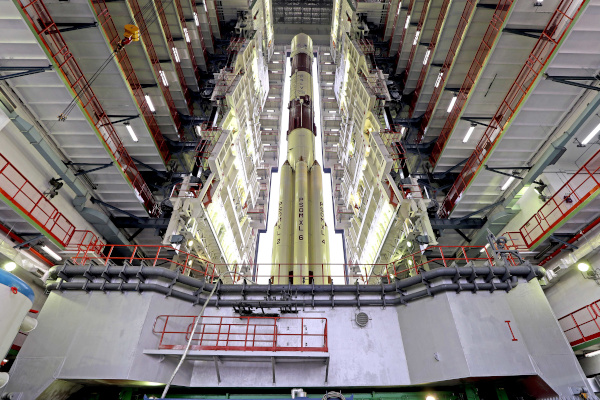In its fiftieth successful flight, India’s workhorse Polar Satellite Launch Vehicle (PSLV) launched the communication satellite CMS-01, which will replace the old GSAT-12 satellite launched in 2011.
The new satellite will enhance the country’s communication networks and aid in e-learning, tele-medicine, and disaster management services.
The current satellite has an estimated mission life of over seven years. The rocket – in its XL configuration with six solid strap-on motors – lifted off from the second launch pad at Sriharikota, Andhra Pradesh at 3.41pm on Thursday. After the burn of all four stages of a PSLV rocket, the satellite was placed in an elliptical geostationary transfer orbit. After four days, the Liquid Apogee Motor will be fired and after a few manoeuvres, the satellite will be placed in a circular orbit of 36,000 km.
This was the second launch for the Indian Space Research Organisation (ISRO) this year, with most of the missions – including big-ticket solar mission and first unmanned flight of the Gaganyaan mission – delayed due to the pandemic.
Before the pandemic, India was only able to complete one satellite mission—GSAT-30—this year, launched by the international launcher Arianespace from Kourou, French Guiana, in January.
The launch of PSLV-C50/CMS-01 had earlier been scheduled for December 7, exactly one month after its previous launch. However, the launch had to be delayed by ten days due to weather conditions.
The satellite, named CMS-01, will be the first in a new series of communication satellites by India after the INSAT and the GSAT series. The previous satellite launched by Isro also had an altered nomenclature– EOS (Earth Observation Satellite) 01.
Earth observation satellites in the past were thematically named by the space agency, depending on their task or the kind of instrumentation carried. EOS-01 had previously been named RISAT-2BR2, short for Radar Imaging Satellite (RISAT).
“I am extremely happy to declare that PSLV C-50 successfully injected CMS 01 in precise sub-GTO orbit. The satellite is functioning very well and I have received confirmation that the solar panels have been deployed. In another four days, the satellite will be placed in geo synchronous orbit. This excellent success was achieved because of the hard work of Team ISRO. They worked very safely during pandemic, with minimal staff,” said ISRO chairperson Dr K Sivan after the launch.
Source: FE
You may also like
-
New Heat-Based Approach To Cancer Treatment Can Reduce Chemotherapy Doses
-
Scientists Take A Major Step Towards Unification Of Classical & Quantum Gravity
-
India Graphene Engineering and Innovation Centre (IGEIC) Under the Vision of Viksit Bharat@2047 Launched
-
New High-Performance Gas Sensor can Monitor Low Level Nitrogen Oxides Pollution
-
Antidepressant Drug can be Repurposed for Treating Breast Cancer
